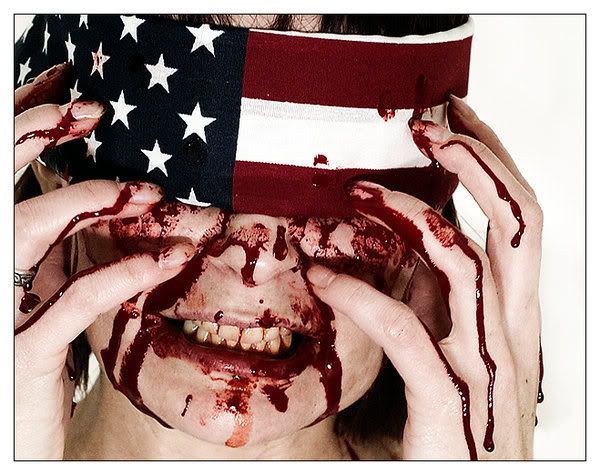 Course change on Stryker unlikely despite environmental harmhttp://starbulletin.com/2008/03/04/editorial/editorial01.htmlTHE ISSUE - A draft environmental review says Hawaii is the best location for a Stryker brigade.SIGNIFICANT environmental consequences aren't enough for the Army to relocate a Stryker brigade it began to establish in Hawaii nearly seven years ago.Despite findings that threatened and endangered species, air quality and natural habitats along with cultural resources would suffer, the Army has decided national security needs and the state's geographic advantages trump those concerns.Barring further legal challenges, it appears the combat team's 4,105 soldiers and 1,000 vehicles -- including more than 320 eight-wheeled, 19-ton armored Strykers -- will be based permanently in the islands.Hawaii's congressional delegation and military officials say they are certain harm will be mitigated. Residents will have to take them at their word since few have the wherewithal to make sure that happens. The Army would do well to allay fears and mistrust developed over the years in a state that has accommodated an overwhelming share of military operations.A supplemental environmental study the Army conducted found that the Stryker would have significant effects in the islands. The second study was required by a federal court that found the Army violated the law when it did not adequately consider other sites for the brigade in the first go-round.The supplemental review determined that the brigade would increase noise, soil erosion, habitat impairment, malignant weeds and hazardous wastes at all the sites, Hawaii, Alaska and Colorado, though the degree of environmental harm would be most substantial here.However, in judging other factors -- housing shortages, training ranges, deployment schemes and the feasibility of stationing other types of combat units in Hawaii and costs -- the Army picked the islands.The financial benefits have been persuasive and will remain so as the state's economy, particularly in construction, begins to soften. Almost $700 million in 28 construction projects are planned or in the works for the brigade on Oahu and Hawaii island. Local business also welcome spending by thousands of soldiers and their families.Stryker opponents had argued that economic benefits would have come anyway since the Army needed to upgrade facilities and had planned to bring in one kind of unit or another, if not the Stryker brigade, and that the environmental trade-off was too great.While an argument can be made that Hawaii's unique environment should be given greater consideration, its strategic location -- and the millions of dollars the Army has already spent for Stryker projects here -- makes a course reversal improbable.
Course change on Stryker unlikely despite environmental harmhttp://starbulletin.com/2008/03/04/editorial/editorial01.htmlTHE ISSUE - A draft environmental review says Hawaii is the best location for a Stryker brigade.SIGNIFICANT environmental consequences aren't enough for the Army to relocate a Stryker brigade it began to establish in Hawaii nearly seven years ago.Despite findings that threatened and endangered species, air quality and natural habitats along with cultural resources would suffer, the Army has decided national security needs and the state's geographic advantages trump those concerns.Barring further legal challenges, it appears the combat team's 4,105 soldiers and 1,000 vehicles -- including more than 320 eight-wheeled, 19-ton armored Strykers -- will be based permanently in the islands.Hawaii's congressional delegation and military officials say they are certain harm will be mitigated. Residents will have to take them at their word since few have the wherewithal to make sure that happens. The Army would do well to allay fears and mistrust developed over the years in a state that has accommodated an overwhelming share of military operations.A supplemental environmental study the Army conducted found that the Stryker would have significant effects in the islands. The second study was required by a federal court that found the Army violated the law when it did not adequately consider other sites for the brigade in the first go-round.The supplemental review determined that the brigade would increase noise, soil erosion, habitat impairment, malignant weeds and hazardous wastes at all the sites, Hawaii, Alaska and Colorado, though the degree of environmental harm would be most substantial here.However, in judging other factors -- housing shortages, training ranges, deployment schemes and the feasibility of stationing other types of combat units in Hawaii and costs -- the Army picked the islands.The financial benefits have been persuasive and will remain so as the state's economy, particularly in construction, begins to soften. Almost $700 million in 28 construction projects are planned or in the works for the brigade on Oahu and Hawaii island. Local business also welcome spending by thousands of soldiers and their families.Stryker opponents had argued that economic benefits would have come anyway since the Army needed to upgrade facilities and had planned to bring in one kind of unit or another, if not the Stryker brigade, and that the environmental trade-off was too great.While an argument can be made that Hawaii's unique environment should be given greater consideration, its strategic location -- and the millions of dollars the Army has already spent for Stryker projects here -- makes a course reversal improbable.

 mahalo:Nini'aneFreeHawaiiBanner
mahalo:Nini'aneFreeHawaiiBanner



Comments
From: Nini'ane
Date: Mar 9, 2008 5:22 PM
By Gregg K. Kakesako
gkakesako@starbulletin.com
Despite the insistence by local environmental groups that Fort Lewis is a better location than Schofield Barracks, Army planners say there is no room at the Washington state base for another 4,000-member Stryker Brigade Combat Team and their family members.
Fort Lewis was the home of the Army's first combat unit built around the 320 eight-wheeled, 19-ton vehicles. Opponents like environmental lawyer David Henkin believe the Washington facility has the necessary room and its location near an Air Force transport base makes it a better choice than Schofield Barracks.
"In 2004, we were told we can't look at Fort Lewis because Fort Lewis has two Stryker brigades and can't take a third," said Henkin, who represents Ilioulaokalani Coalition, Na Imi Pono and Kipuka in a long-running legal battle protesting the Army's plan to convert one of the 25th Infantry Division's units to a Stryker unit. "Few weeks after they said that, they moved a third Stryker brigade to Fort Lewis and to this day Fort Lewis has three Stryker brigades."
In the draft environmental impact statement that recommended Schofield Barracks as the home of the Army's fifth Stryker unit, Henkin said Army leaders again ruled out a fourth Stryker unit at Fort Lewis, which he claims is an about-face from the Army's previous position.
On Feb. 22, the Army released a supplemental environmental impact statement that recommended Schofield Barracks as the base for a Stryker team. The study rejects Fort Lewis, saying it is "at its maximum capacity" in supporting three Stryker Brigade Combat Teams. "Accommodating the full requirements of an additional SBCT (Stryker Brigade Combat Team) would require an additional 192 acres of space within the cantonment area, temporarily discounting the fact that facilities could not be constructed in time," the study says.
Fort Lewis is experiencing a family housing shortage of 1,100 units, the report says, and the surrounding Seattle-Tacoma area is "critically short on housing availability to meet these needs."
An additional Stryker brigade means the Army would need 2,000 units for married soldiers and their families, according to the 743-page study.
There also aren't enough training ranges and facilities to support an additional Stryker brigade at Fort Lewis, the report says. The Army estimates that it would need seven additional training ranges.
Army planners also reject Henkin's arguments that Fort Lewis' location next to McChord Air Force Base makes it a better location to meet the Army's rapid deployment intent to send a Stryker unit anywhere in the world in 96 hours.
"Stacking four Stryker units at one location would tie up deployment facilities allowing only SBCT to deploy at one time," the report states.
The environmental study says the Army considered more than 160 locations before limiting the selections to Schofield Barracks, Fort Richardson in Alaska and Fort Carson in Colorado.
The Army rejected:
» Exchanging a heavy brigade, equipped with tanks and armored vehicles from Forts Bliss and Hood in Texas and Fort Stewart in Georgia with 25th Division's Stryker brigade because Hawaii's training sites are not ideal for conducting maneuvers involving tanks and heavy armored vehicles.
» Exchanging the new infantry units planned for Fort Stewart and Fort Bliss with Hawaii's Stryker unit because the new infantry units won't be in place until 2011.
» Stationing the Stryker unit at an Army Reserve or Army National Guard installation because the 25th Infantry Division's 2nd Brigade Combat Team is an active duty unit which has different requirements than those in the reserves.
» Permanently stationing the Stryker unit overseas because the Army is now bringing home 44,500 soldiers from Europe and South Korea and will no longer be stationing combat brigades overseas because of a change in national security and defense policies.
» Acquiring more land to support a Stryker unit at Fort Knox in Kentucky, Fort Drum in New York, Fort Riley in Kansas or Fort Polk in Louisiana because it would take too long.
» Permanently stationing the Stryker unit at Schofield Barracks but conduct all training away from Hawaii because it would be both time-consuming, expensive and disruptive to the soldiers and their families.
» Stationing the Stryker unit at Schofield Barracks temporarily and then moving it when construction is completed at its permanent post because it would be a waste of money to build duplicate sets of training facilities.
» Dropping the Schofield Barracks Stryker brigade from the Army inventory because it "would reduce the Army's combat forces at a time when those forces are under considerable strain. It would also leave only one BCT (brigade combat team) to meet the Army's mission requirements in the Pacific."
Nearly $700 million have been set aside for 28 construction projects since the Stryker project began nearly four years ago. Many have been completed or are in the final stages of completion.